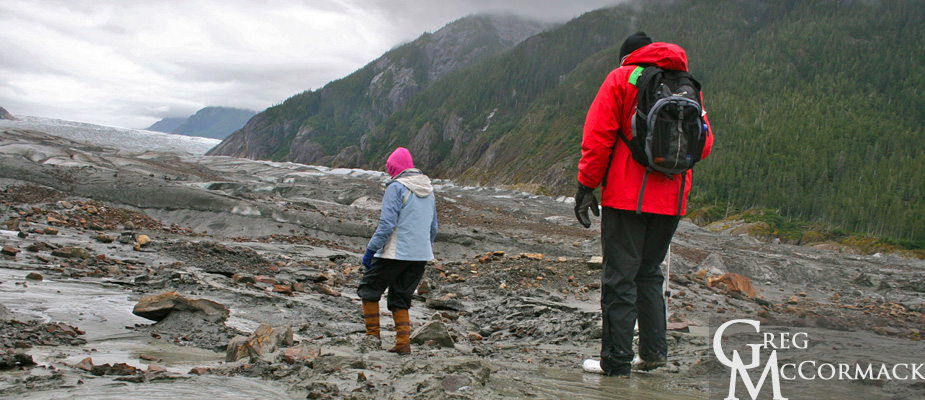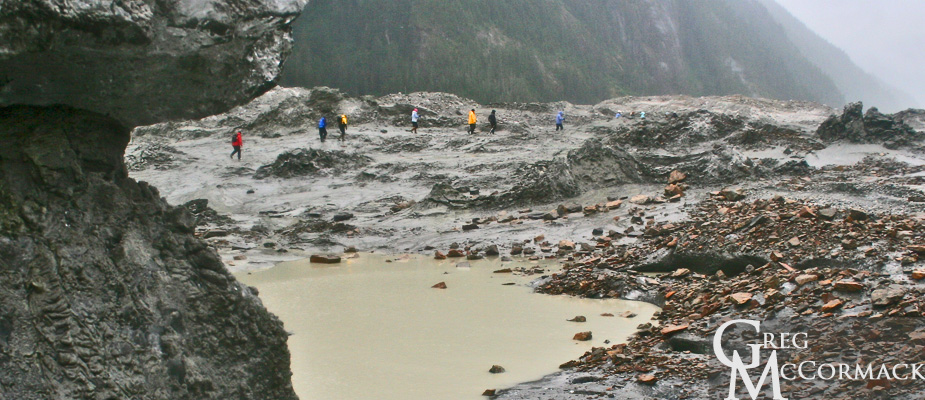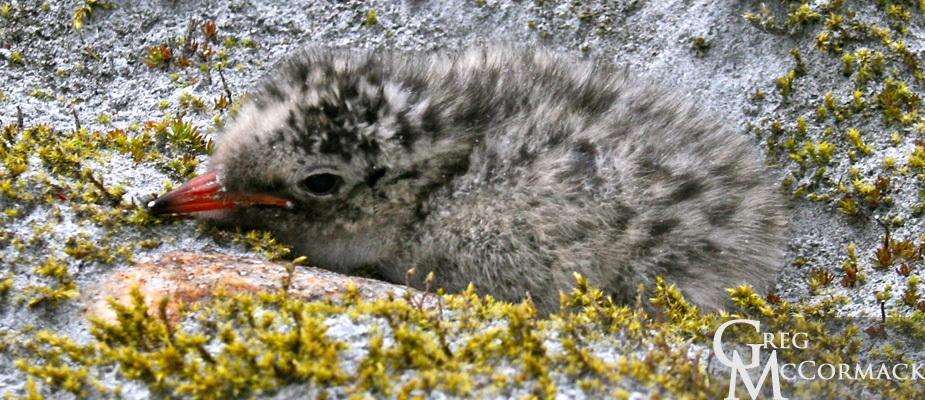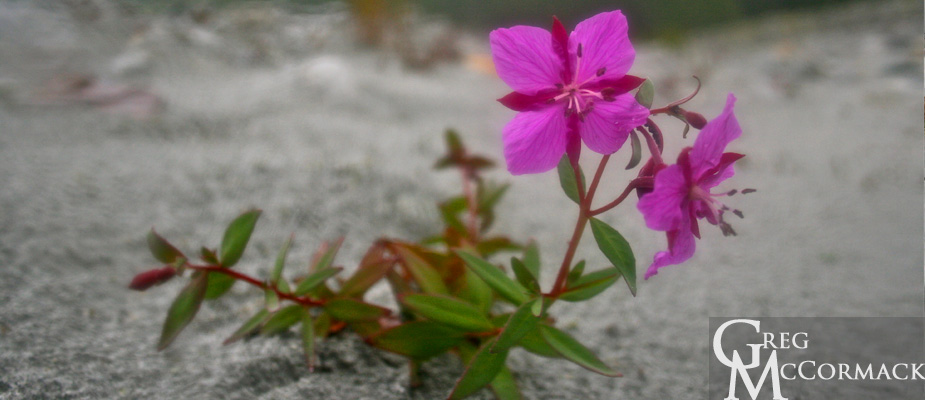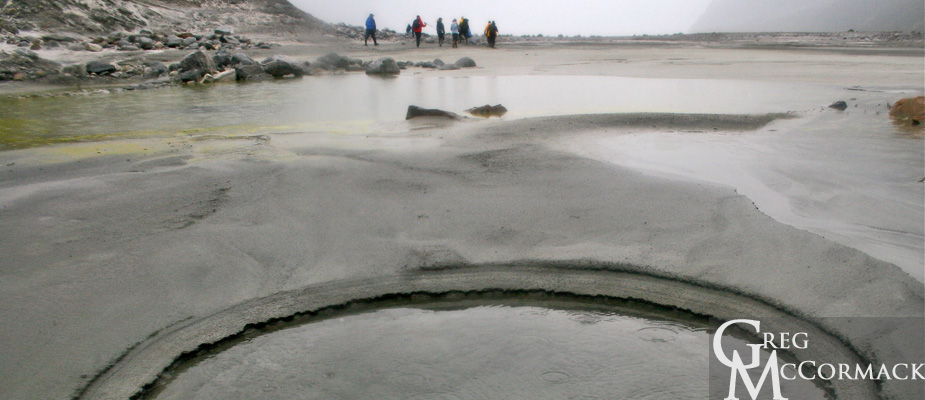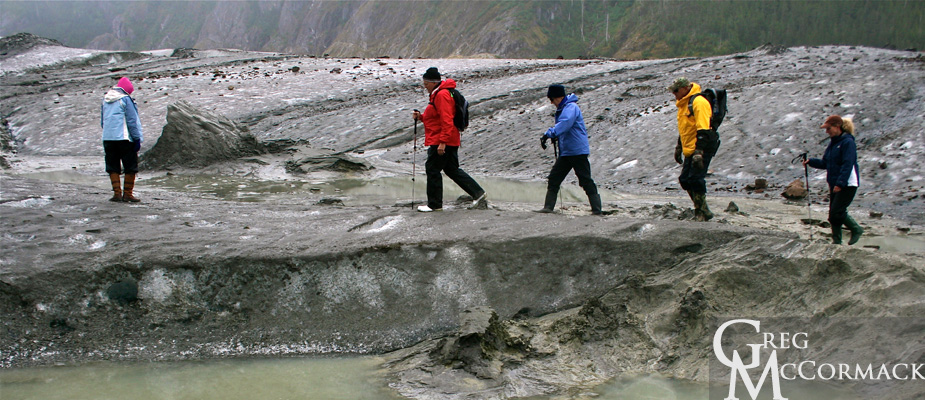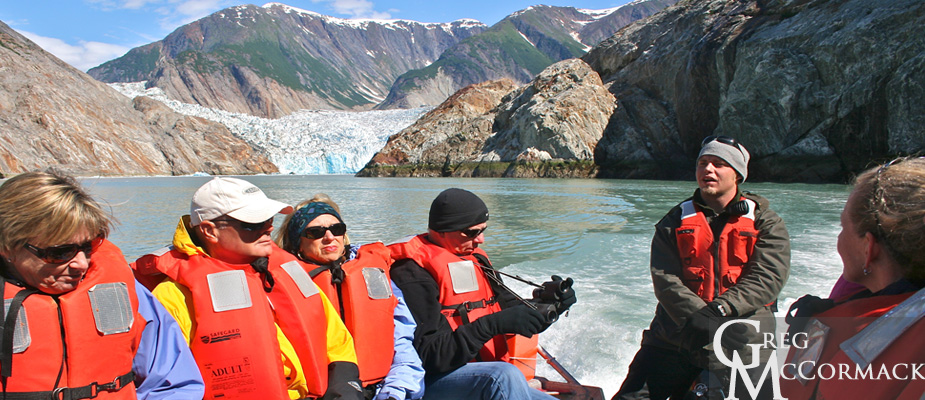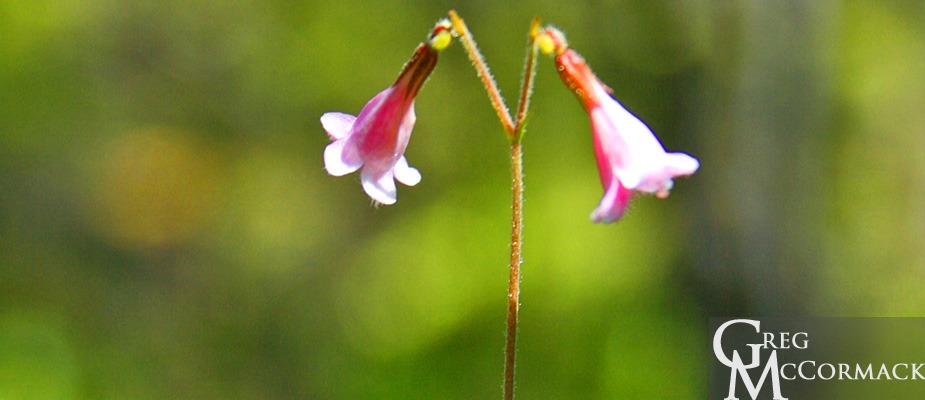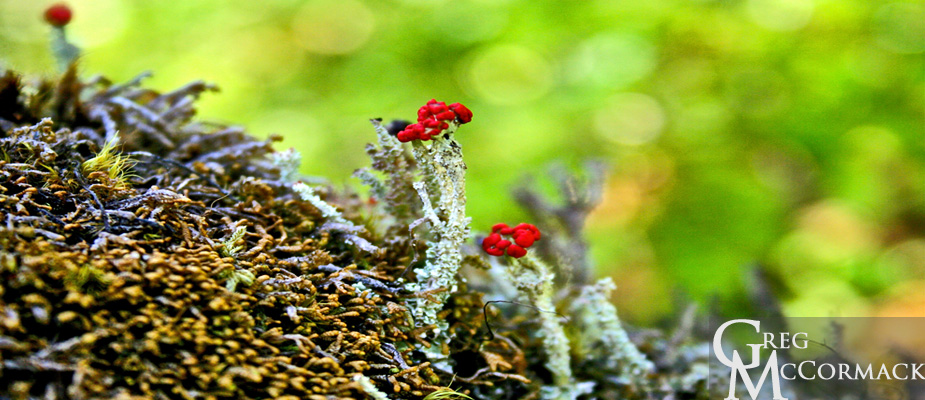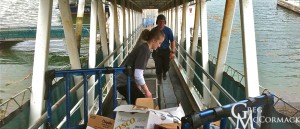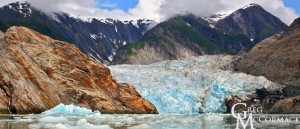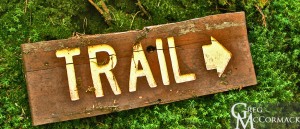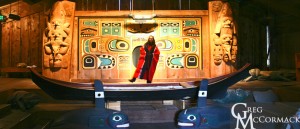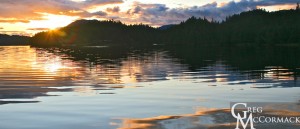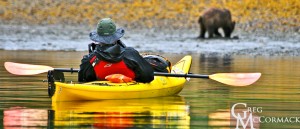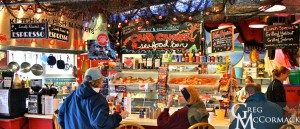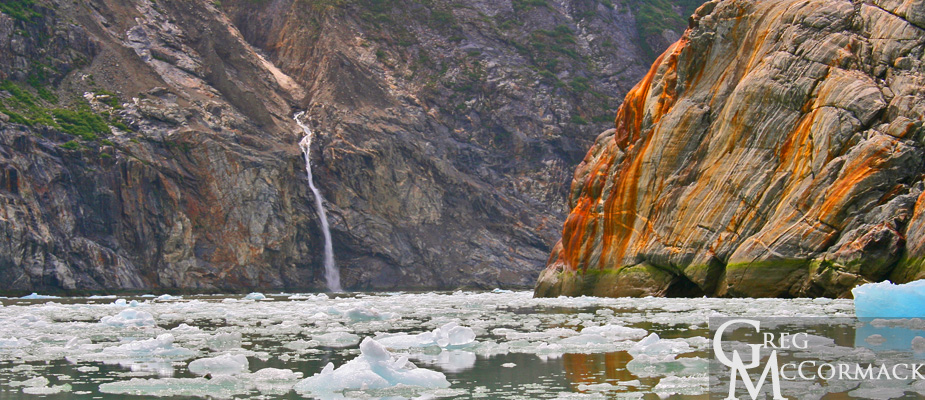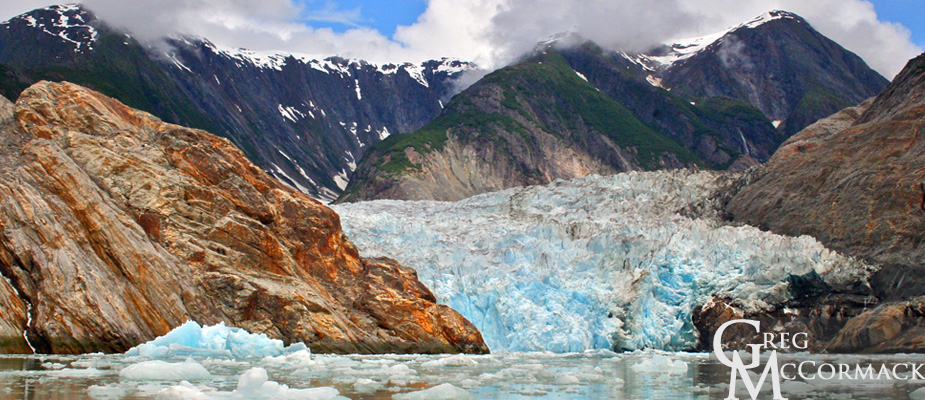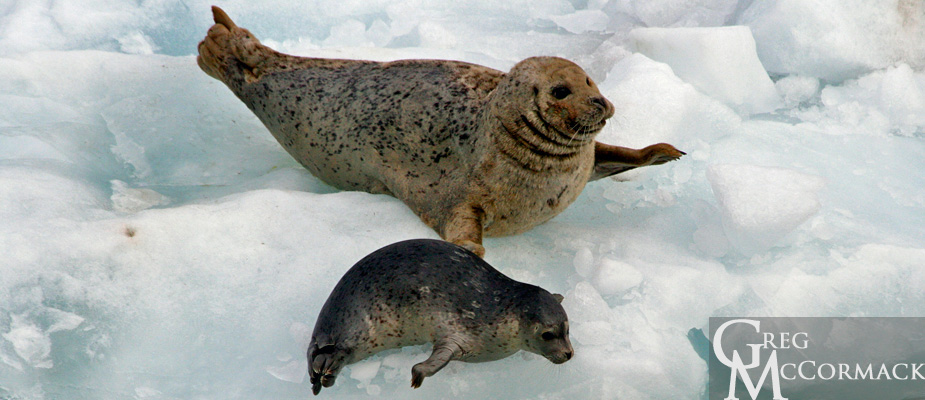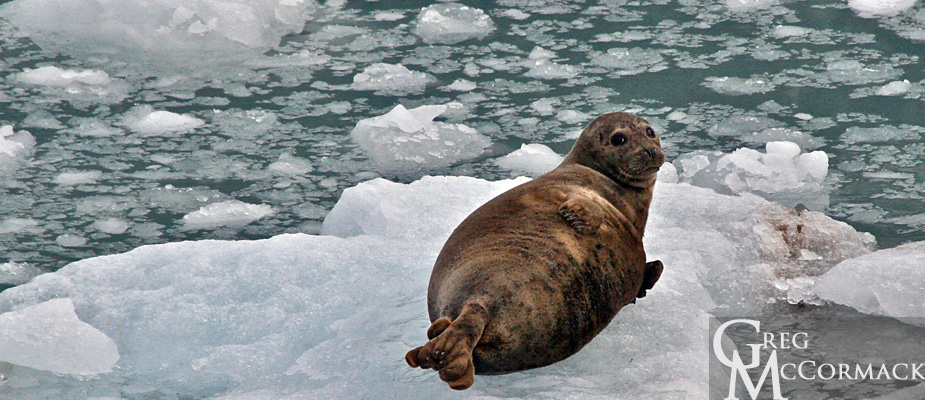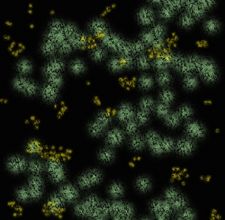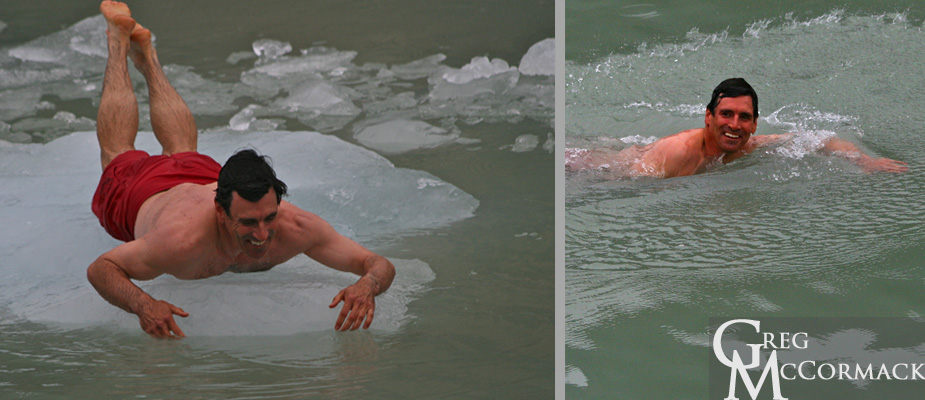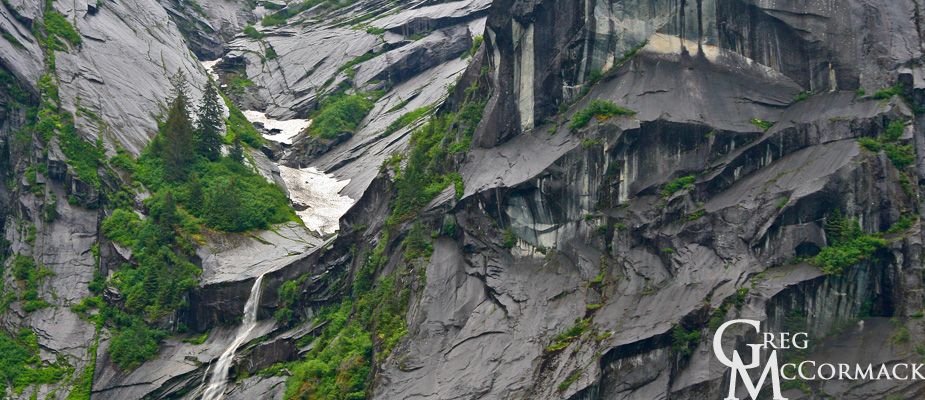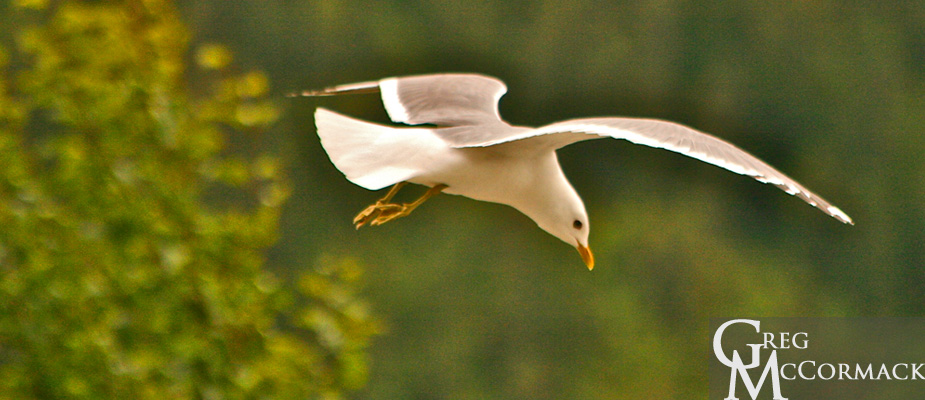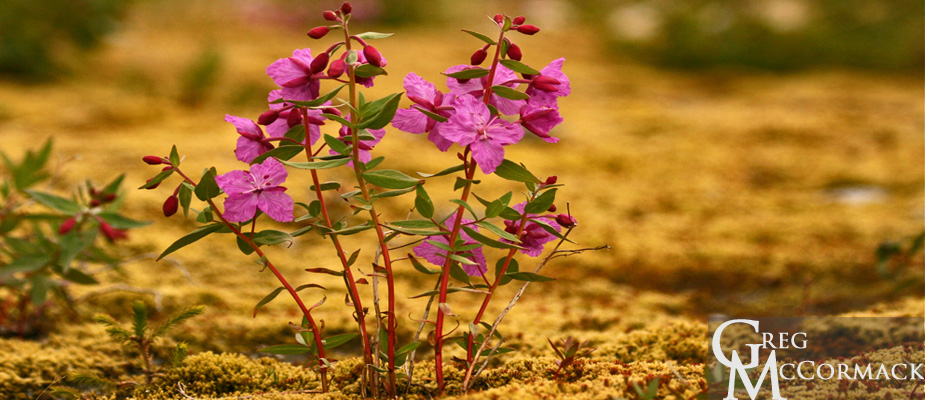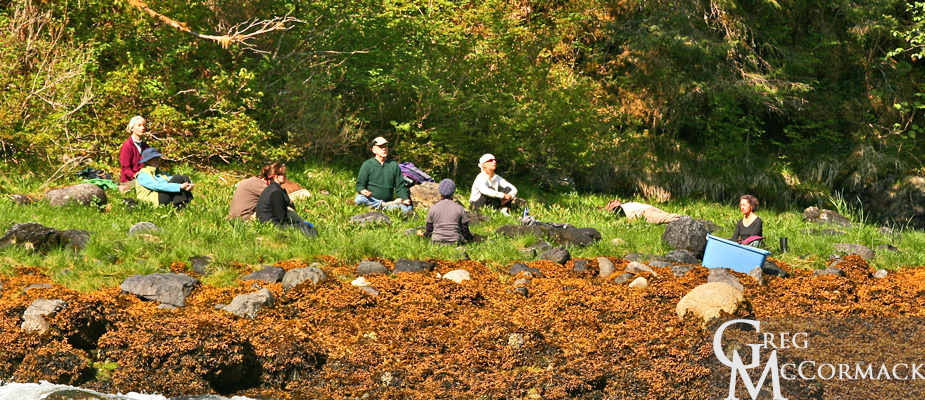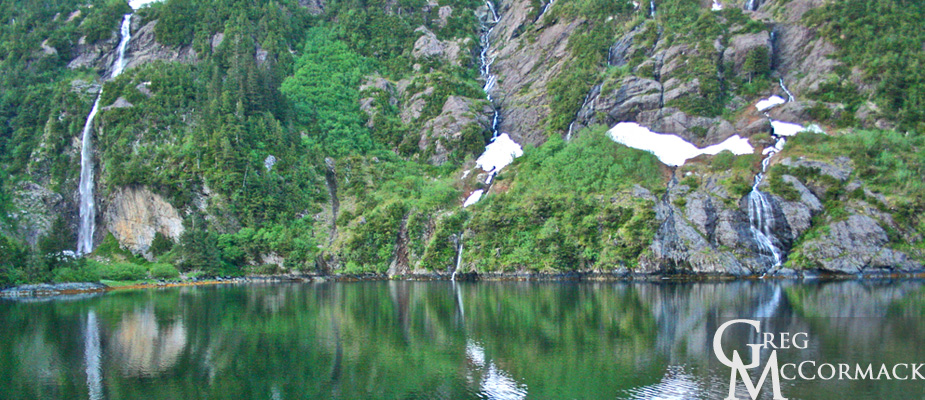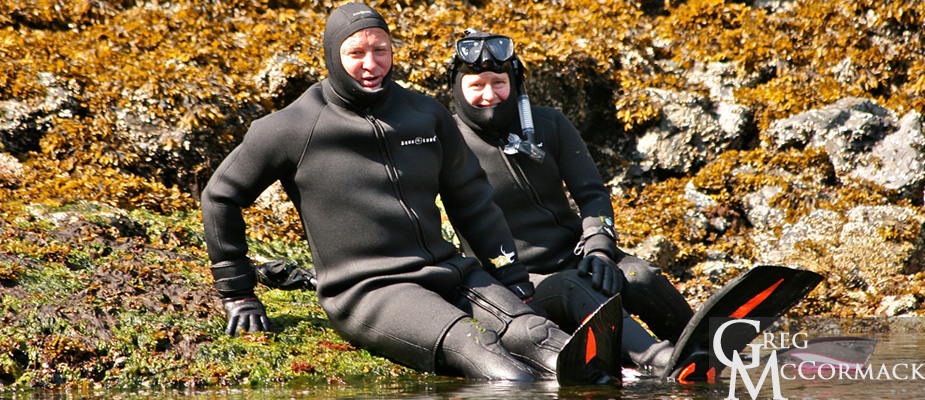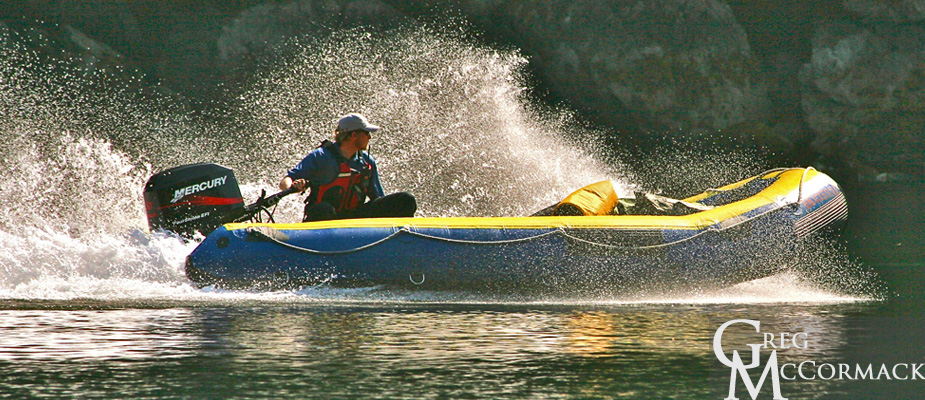Search results
Monday | July 18
October 3, 2011 by admin
Filed under InnerSea Discoveries
Thomas Bay & Baird Glacier
“Everybody needs beauty as well as bread, places to play in and pray in, where nature may heal and cheer and give strength…” -John Muir
Today (despite the threatening clouds and persistant drizzle) was a fabulous day for a hike on the glacier. Any day on a river of ice is adventurous and all of our guests that joined us had a blast.
The Baird Glacier is so intriguing because of the numerous features that completely baffle the mind as to how they were formed.
Case in point. Partway up the snout of the glacier are a series of longitudinal ablation crevasses that have closed back up and look like sutures on a skull. Pyramids of ice burst up and through these visible fissures and they are completely covered in sand. Sand just inches in thickness, often wet due to the melting ice that lies beneath.
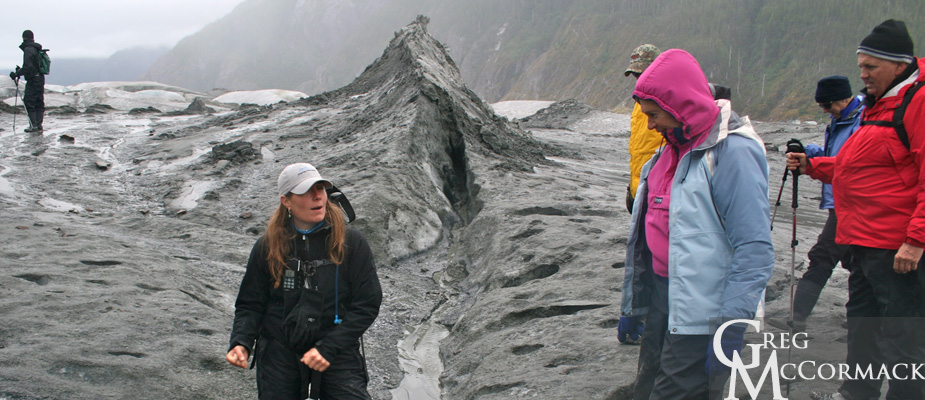
Could it be the result of a jokuhlaup or glacial outburst flood? The pressure of the water pushing up through old crevasses in the ice? Who knows? It is fun to theorize.
We do see a baby tern chick that hides and stays hidden behind a cobblestone.
Other sights:
• a push or terminal moraine
• moulins on the ice surface that look like blue swirling toilet bowls
• a Semi-Palmated Plover that shows us the “broken-wing” tactic
• soft, vibrant green mosses with islands of foliose lichens, pinkish blossoms of the Dwarf Fireweed or River Beauty (Epilobium latifolium)
• 100’s of 1000’s of river-rounded granitic boulders in front of the glacier and angular, iron-rich rocks on top of the glacier
• Arctic Terns dropping down to the waters surface to collect inch-long krill; others fly back to chicks holding fish in their bills
• Harbor seals plying the waters in front of the river
The Baird Glacier comes off of the Stikine Icefield, an area that is approximately 100 miles long from the Whiting River in the north to the Stikine River in the south and about 30 miles wide from tidewater up and over the crest of the Coast Range past the international boundary into British Colombia, Canada.
Our trip upriver was very eventful. Melt-waters of raging Class II rapids. Our larger, heavier boat with 8 passengers barely makes headway. Both boats hit rocks, doing damage to the props. The banks of the river are loosely sorted boulders piled up high and it’s difficult to make progress upriver. For 5 minutes—at full throttle—we make about 200 feet of progress and finally make it to a safe landing spot.
We hike about a kilometer to the terminal moraine directly in front of the glacier. The remnants of broken pieces of ice create boot-sucking mud pits that are best to avoid. Curiosity always makes a few folks push down with just the right amount of pressure on a mud spot to create liquefaction.
Seeing geology in action is what the concept of uniformitarianism is all about, i.e. “the present is the key to the past”. This is what makes the study of the earth so fascinating. One can deduce what is visible in the here and now to landscapes and processes that have been going on for millennia, periods, eras and eons of time.
Sunday | July 17
October 3, 2011 by admin
Filed under InnerSea Discoveries
Tracy Arm & Sawyer Glaciers
“Domes swell against the sky in fine lines as lofty and as perfect in form as those of the California valley, and rock-fronts stand forward, as sheer and as nobly sculpted. No ice-work that I have ever seen surpasses this, either in the magnitude of the features or effectiveness of composition.” –John Muir
John Muir, writing in his book Travels in Alaska, described Tracy Arm as a “wild unfinished Yosemite”.
We awake to a fine day. The anchor is lifted at 6 a.m. and the Wilderness Discoverer cruises up the magnificent fiord that is Tracy Arm. Yosemite-like domes, waterfalls that seem to come right out of the sky, and rainforests that exhibit many shades of green are passed as we motor at the speed of 9-knots up the 23-miles to the face of the Sawyer Glacier.
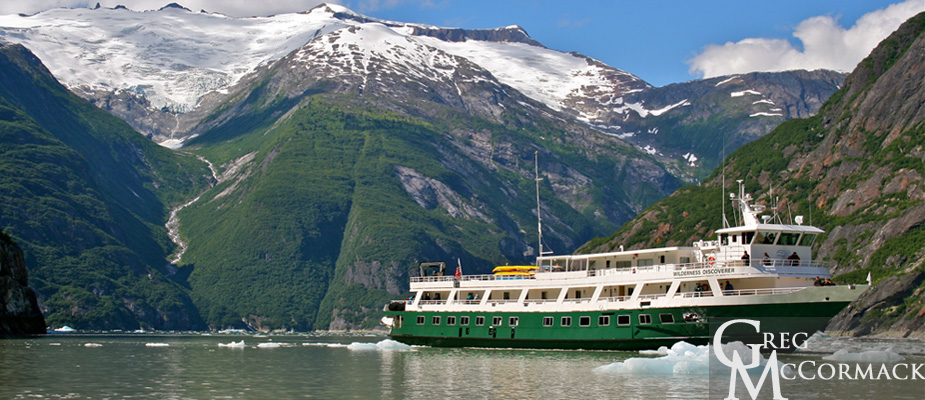
This is the Tongass National Forest, the largest National Forest in the United States at almost 17 million acres in size. It ranges from the Southeast Alaska panhandle between Ketchikan and Yakutat. It incorporates the Alexander Archipelago, located in the Inside Passage between the Coast Mountain Range and the Gulf of Alaska in the Northeast Pacific Ocean. The Tongass happens to have the largest contiguous, intact temperate rainforest in the world.
The temperate rainforest biome ranges from the narrow strip of land between northern California and Kodiak Island, Alaska. Some of the hallmarks of this rainforest is the presence of Sitka Spruce, a profusion of epiphytes such as mosses and lichens, a climate regime that includes around 100-inches of precipitation a year and the presence of nurse logs.
Small boat tours are offered to bring guests up close to the Sawyer Glacier. Photographic opportunities abound for camera-toting guests.
Brash ice is quite thick. Birds are flying back and forth in front of the tidewater glacier and seals are hauled out on small ice-bergs or “growlers”.
We are lucky to have two wilderness kayak rangers join us with two of their “artists-in-residence” volunteers. Our Tongass National Forest Rangers Solan Jensen and Sean Reilly give an insightful talk on the history of wilderness in the dining lounge.
After disembarking the kayak rangers, we ask guests to participate in three rounds of talks surrounding our adventure program of kayaking, stand-up paddleboarding or SUP, and how to behave in bear country. I lead the talk on SUP in the lounge with an assistant to “model” appropriate techniques.
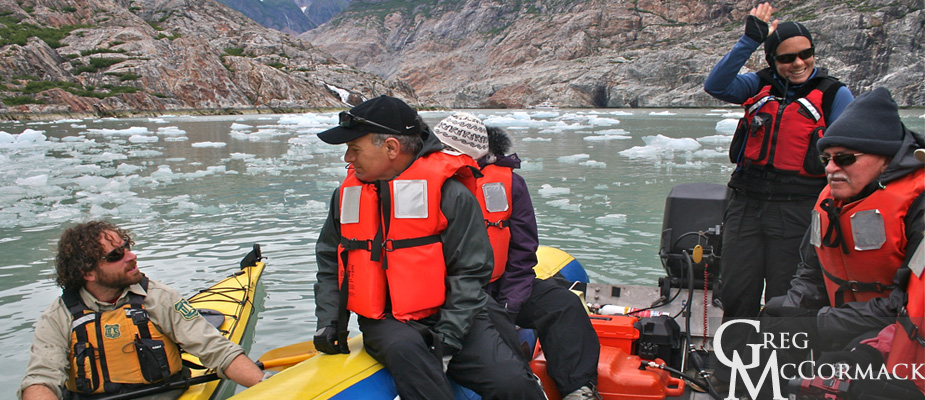
It’s amazing how SUP has become the latest trend in ocean sports. As a fitness sport, it uses all of the major muscle groups. It works the core and legs while you try to balance and the upper body while paddling.
It’s easy to carry a SUP and that is one of the major advantages over having a sea kayak. On calm, flat days the only real hazard for SUP’ers is navigating wakes from passing boats. These boards are wider and more stable than a regular surfboard. However, I would not recommended trying to walk the nose and “hanging ten”.
For novice paddleboarders, it’s worth trying it more than once to build a comfort level and to see if the sport is enjoyable. Every time you get out on the water while here on vacation will make it that much easier to try it again back home.
The minimal effort of SUP-ing (not a great acronym, I just realized) for just a few minutes while circumnavigating the Wilderness Discoverer will allow a partner or crew to photo-document your efforts. That way you can prove to kith and kin how adventurous you really were in Alaska.
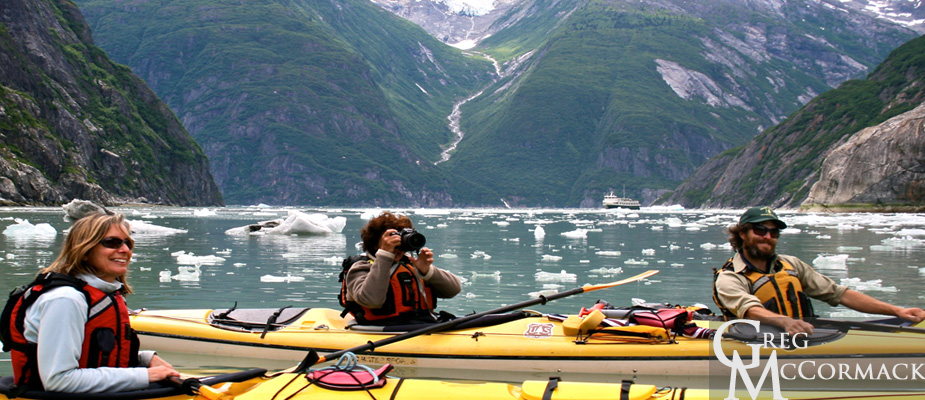
My overall message is to encourage folks to “get up, stand up…stand-up for bragging rights!”
The afternoon is spent whale watching in the waters adjacent to Admiralty Island National Monument. Kootznahoo or “Fortress of the Bears”, has the greatest concentration of brown bears in the world, about 1 bear per square mile on the 1,700 square mile island. We motor too far away to spot brown bears (visitors that want to see bears can go to Pack Creek on the northeast side of the island).
Humpback whales are spotted exhibiting a range of behavior such as spouting, lob-tailing and breaching. These fascinating baleen whales have travelled all the way from Hawai’i to feed all summer long.
Friends stay up late enjoying a lingering twilight and the ever-changing seascapes that almost hypnotize to a state of nirvana.
Sunday | July 10
September 26, 2011 by admin
Filed under InnerSea Discoveries
El Capitan
“Everybody needs beauty as well as bread, places to play in and pray in, where nature may heal and cheer and give strength.” –John Muir “The Mountains of California”
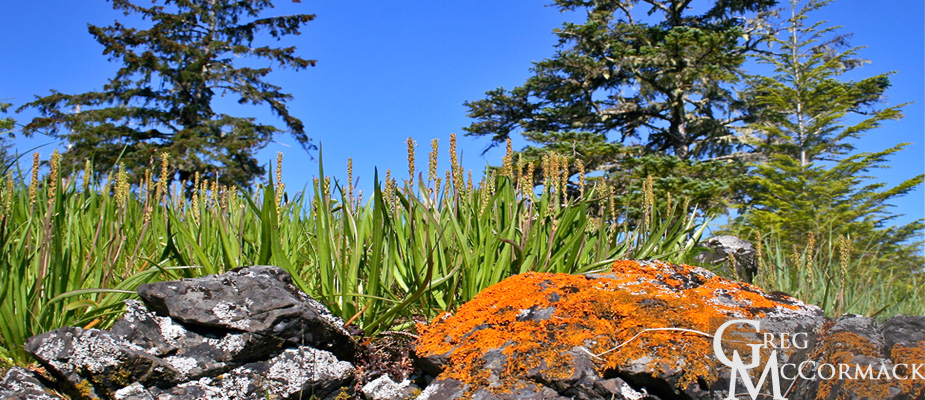
All of our guests are asked to go through our three “station rotation” trainings in kayaking, stand-up paddleboarding, small boat and bear safety.
Each “evolution” occurs in a different area of the ship (two in the lounge and one on the top deck).
After grabbing paddle jackets and depositing them in the lockers, adventure-seekers are ready for disembarking on our first full day of activities at Prince of Wales Island.
We anchor at the north end of El Capitan Passage where Dry Pass enters a bay approximately ½ mile wide by 3 miles long.
Despite the fact that there has been heavy logging in the past (clear cuts are visible along with a logging road on the north shore that leads to a small, private lodge), the place is peaceful and scenic.
My job this morning is to provide a “kayak clinic” for beginning kayakers out in the bay. I demonstrate paddling techniques, bracing, how to turn around, get the rudder up and down among other pointers.
“We could try the ‘Eskimo Roll’ if you’d like?”, I asked jokingly. The temperature of the waters here are in the high 40’s to low 50’s Fahrenheit, or about 10 degrees Celsius. If we were to practice rolling and submerging, we’d want to don dry suits.
Highlights along the shoreline include a Sitka black-tailed deer (doe with fawns) browsing on grasses above the beach wrack or strand zone, bald eagles at their nest, breaching salmon and best of all: Sunshine!
On our way back to the ship, I recruit other kayakers to help find macro-algaes, in particular the bull kelp. The pneumatocyst or air float can mimic the head of an otter, especially when there is a wind chop or swell on the sea surface. We find some un-attached Nereocystis leutkeana floating with its holdfast attached to a tiny rock. We haul it aboard and put it in a bucket for further examination later today.
In the afternoon I lead a less intense version of a forest walk that doesn’t include 367 steps up a steep hill to a cave.
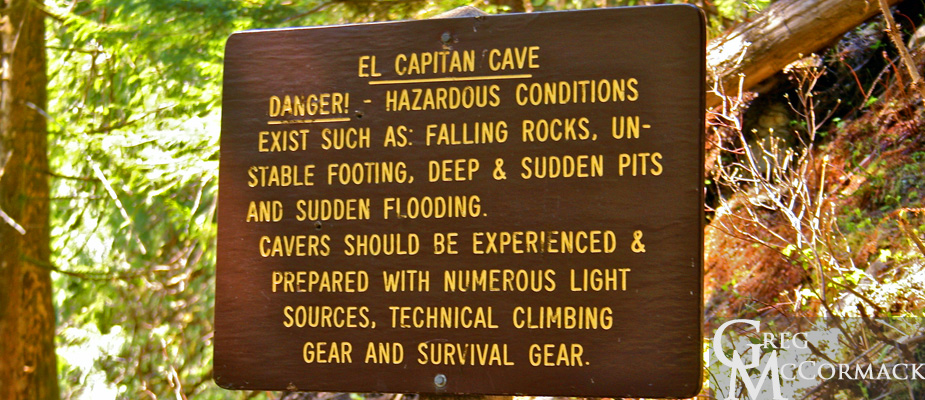
After my introduction explaining safety in bear country, I address my group of intrepid travellers with the theme for the day, one that has been a favorite of mine over the four decades that I’ve been leading interpretive walks:
“Folks, instead of hiking, we will saunter—serendipitously–along these Forest Service roads. Horace Walpole, a British writer in the mid-1700’s, wrote a fairy tale called the ‘Three Princes of Serendip’. They had a knack for the unexpected, for discovering things that they had no idea they’d find. So let’s use all of our senses and see what we might come across over the next 90-minutes.”
Our finds included the stinky raceme of the skunk cabbage, scatological findings from several mammals, squirrel pine cone middens, flowers, mushrooms and various birds that I identified “by ear”, amongst other delightful finds.
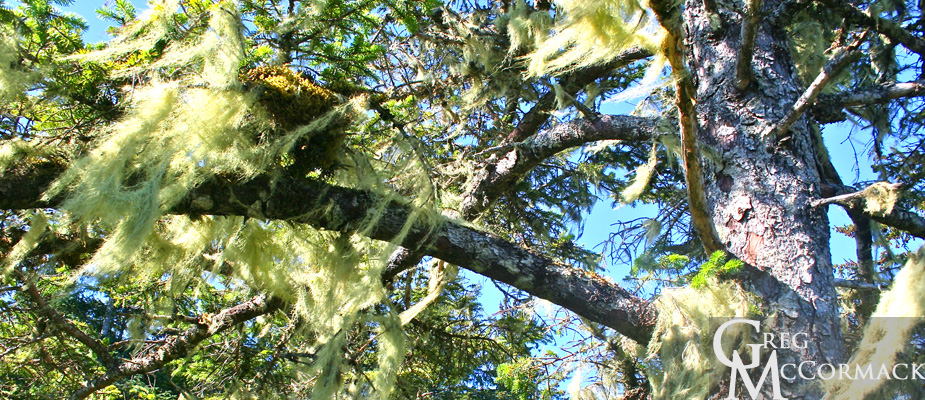
Back aboard, I give a talk entitled “The Multifarious Uses of Nereocystis leutkeana”, a demonstration of the marvelous seaweed called the “bull kelp”. There are a lot of histrionics involved, including audience participation and hand-held specimens.
Here’s a few of the highlights:
• Bull Kelp is an annual that can grow to 20 meters
• The range of this nearshore brown algae is from central California to Alaska
• The decimation of the (urchin-eating) Sea Otter by the Russians led to an increase in the herbivorous (kelp-loving) sea urchins and a subsequent decrease in kelp and what the kelp forest harbors, including many dozens of invertebrates and fishes
• Native American uses include food and medicine, and recreational uses including ceremonial speaking tube, musical instruments, siphoning hose, jump rope, lion tamer, target practice, etc.
I entertain folks by using a knife to cut the kelp specimens and volunteers entertain everyone by using the hollow stipe as a trumpet-like horn, bugling the announcement for dinner!
where is gmack now? innersea discoveries expedition week 10
It has been an exciting week on the InnerSea Discoveries Expedition Click Links Below to read daily updates from Week 10 of the Trip:
July 2 – July 9, 2011
Saturday | July 2
TURNOVER DAY = SWABBING THE DECKS
Sunday | July 3
GLACIER CALVING, SEALS & WHALES
Monday | July 4
HAPPY 4TH OF JULY, EVERYBODY!
Tuesday | July 5
MOOSE PELLETS
Wednesday | July 6
CHIEF SHAKES LODGE
SNORKELING AND BANJO PLAYING
Friday | July 8
CLAM-EATING BEAR
Saturday | July 9
“WE NEED THE GREGgle APP!”
Sunday | July 3rd
September 14, 2011 by admin
Filed under InnerSea Discoveries
“Never before this had I been embosomed in scenery so hopelessly beyond description. Tracing shining ways through fjord and sound, past forests and waterfall, islands and mountains and far azure headlands, it seems as if surely we must at length have reached the very paradise of the poets, the abode of the blessed.” –John Muir
At 06:00 the anchor is lifted and the Wilderness Discoverer begins its journey up the 30-mile long Tracy Arm fiord. I like to tell folks that we are all taking a trip back 15,000 years to the Pleistocene Epoch to see what much of the northern latitudes on Earth were like at the southernmost extent of the Wisconsin era glaciation. Basically a person could strap on some skis and continue on ice from Tracy Arm south to present-day Olympia, Washington and head then head east to Cape Cod, Massachusetts.
Tracy Arm—Fords Terror was designated a wilderness area in 1980 with President Jimmy Carter’s passage of the Alaska National Interest Lands Conservation Act (ANILCA). Prior to this it had been designated a National Forest Scenic Area in 1960 and 10 years later a Wilderness Study Area in recognition of the opportunities for solitude and its dramatic beauty.
It was President Lyndon Johnson that signed the Wilderness Act in September of 1964.
It states:
“In order to assure that an increasing population, accompanied by expanding settlement and growing mechanization, does not occupy and modify all areas within the United States and its possessions, leaving no lands designated for preservation and protection in their natural condition, it is hereby declared to be the policy of the Congress to secure for the American people of present and future generations the benefits of an enduring resource of wilderness.”
Everybody seems to appreciate being a visitor to this wilderness as they are out on decks to soak-in the scenery, admire ice-bers and to look for wildlife.
We offer small boat tours. Adventure-seekers enjoy close-up views of the Sawyer Glacier calving ice and the dramatic mountain scenery. I point out the waterfall, located 1.5 miles away from the face of the Sawyer Glacier. When I first started leading folks here in the early to mid-90’s, the glacier was close to this cataract.
People are amazed to see how far it has receded and how much thinning of the glacier has taken place. The barren rock and trim-line of vegetation high up above the recently de-glaciated rubble landscape are reminders of a changing climate.
Harbor seals are spotted on the ice “growlers” or brash ice. Some are seen with pups that were recently born. It takes 6-weeks before pups are weaned off of the mothers milk and are on their own to search for food.
Arctic terns ply the waters, catching schooling fish for their developing young that await in the rock gardens bordering the fiord. Gulls fly back an forth in front of the glacier waiting for the next calving that will churn-up small fish and shrimp for easy-pickings.
Our afternoon and evening is spent looking for and watching whales in Frederick Sound.
Friday | July 1st
September 10, 2011 by admin
Filed under InnerSea Discoveries
The Green Flush and an Ice Swim
Speaking of plankton, I awake and visit the head (bathroom) without turning on the light and shout “Wow” several times, loud enough to awaken my cabin-mate. I couldn’t contain my enthusiasm.
You’ve heard of the green flash? Been there, seen that. You have to see the green flush! I will have to take a picture of it next time I see it. You see, our septic system works on sea water. In just a few liters, you can have tens of thousands of microscopic organisms. On rare occasions, the entire bowl in the head is awash with a blue-green light. When the head is flushed, hundreds of miniature lights sparkle and swirl. It’s as if you are in the beginning of a Star Trek or Star Wars movie with distant stars moving quickly past the camera.
I run out of my room and start inviting my fellow shipmates over to see it, but it sure does take a lot of coaxing to get anyone interested. Perhaps it’s because the area inside our bathrooms are so small…standing in the center with your arms akimbo is all the room you have to maneuver.
What I learned years ago is that the light is caused by a luciferin-luciferace enzymatic reaction, a luminescence of a biological kind, otherwise known as bio-luminescence. If I remember correctly, the organisms that cause this are often Noctiluca, Gymnodinium, Ceratium and Gonyaulax. What’s amazing is that 80% of the organisms that live in the bathy-pelagic or deep water realm of the ocean exhibit some type of bioluminescence in order to attract mates, lure food or just communicate amongst each other.
The M/V Wilderness Discoverer motors into Endicott Arm to the Dawes Glacier. A commotion suddenly erupts at the stern of the vessel. A large group convenes near the swim step for the newest rendition of the Polar Bear Club. I grab a pair of swim trunks, and squeeze my way forward to the platform. I dive in and swim out to the nearest “growler” ice-berg. I climb up, imitate a harbor seal by laying down on the ice and look back at the ship. The water clears out of my ears and I hear all the cheering and invitations to join folks in one of the ships hot tubs. I dive back in and enjoy the sensation of the thirty-something degree Fahrenheit water.
In case you haven’t guessed, I am a pagophilic or ice-loving mammal just like the walruses, seals and whales that inhabit waters in Alaska. I may not have as much blubber, but the feeling of cold water is fabulous, like drinking 20 cups of coffee without having any jitters. A clean, invigorating sensation, for sure!
The other highlight of the day is motoring up Fords Terror, a spectacular fiord that John Muir named “Many Yosemite”.
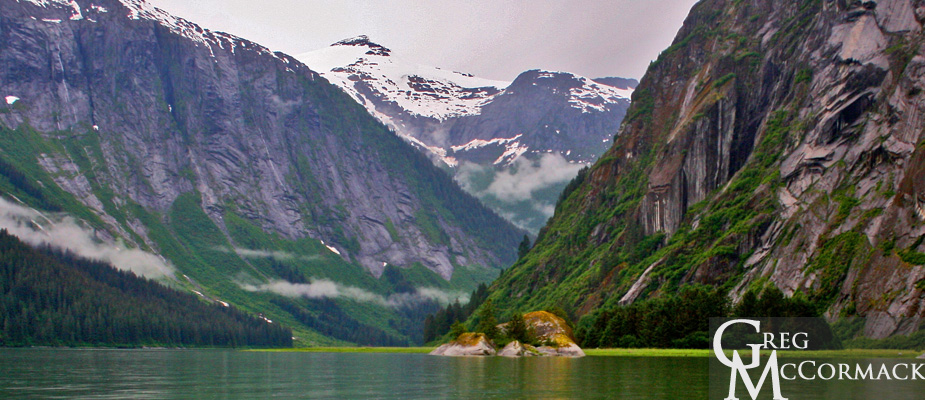
In his book “Travels in Alaska” Muir wrote: “…we found ourselves on a smooth mirror reach between granite walls of the very wildest and most exciting description, surpassing in some ways those of the far-famed Yosemite Valley. We drifted silent and awe-stricken beneath the shadows of the mighty cliffs…a grander array of rocks and waterfalls I have never yet beheld in Alaska…one of my brightest and best of all my Alaska days.”
Small boats are the best way to see so much grandeur in so short a time. Waterfalls were everywhere along with sheer cliffs and outstanding scenery. Fords Terror would be well worth a longer visit, preferably several days via sea kayak.
Monday | June 20
August 8, 2011 by admin
Filed under InnerSea Discoveries
Thomas Bay and the Baird Glacier
Everyone is very excited for the opportunity to walk up to and on a glacier. First, however, guests have to endure a cold ride on small boats for 30 minutes up the glacial melt-water river to a steep bank drop-off. We disembark on basketball-sized boulders and make our way up to a sandy area where plants are recolonizing the deglaciated landscape.
I draw a large circle in the sand with a stick and receive some quizzical looks from my group of 18 hikers. I explain: “This large circle I’ve drawn is planet earth. I draw some lines north and south of the equator and semi-circles just below the North and South poles.”
I jam my stick into one of the dashed lines on my make-shift earth. “Tomorrow at 12 noon at this location 23-degrees north of the equator there will be no shadow cast. What is the name of this geographical position? Right you are, the Tropic of Cancer! What will happen at this circle just below the North Pole? Yes, exactly 24-hours of daylight…no sunset will be seen at the Arctic Circle at 66-degrees north latitude.”
“The long daylight is the reason the humpback whales swim from Hawaii and the gray whales from Mexico. With such long days in the northern hemisphere, plankton blooms are fed upon by krill and schooling fish which provides sustenance not only for whales but other marine mammals and seabirds as well.”
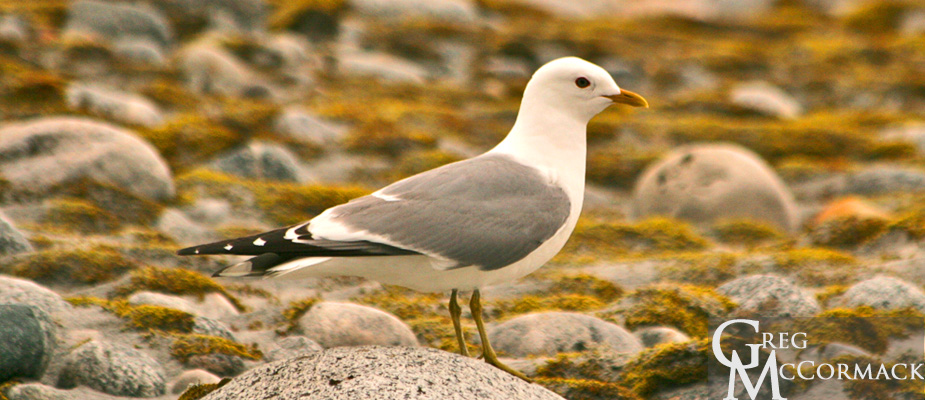
“The Arctic Tern flies up from Antarctica along with millions of migratory birds from central and south America. The long days provide just the right conditions for insects to multiply by the billions. They in turn allow our avian friends to raise not just one brood but two or three with the ability to feed young around-the-clock. If there is a term to describe Alaska and the Far North at this time of year it is “fecund”.”
Just a little bit higher from my scratchings-in-the-sand we are pleased to see so many gorgeous flowers blooming on the moss and lichen-covered rocks.
It’s about a mile walk past the recently colonized outwash plain. Small alders are the next seral stage of plant succession after the mosses and lichens. A few out-of-place sapling conifers such as the spruce and hemlock were seen. They are doomed because there is far too little nitrogen in the soil.
I mention that it will take more than a century from now before the alders give way to the conifers: “We’ll have to make reservations now and come back with our artificial hearts, brains and limbs to see the changes a century or two from now….”
Indeed, glacial rubble to temperate rainforest is a 200-year process from a recently deglaciated landscape. In the wake of the receding glaciers, forests advance and following the greening landscape are mammals, first the herbivores and then the carnivores.
I spot inter-stadial stumps in the terminal moraine. Otherwise known as “fossil wood” which John Muir described in his book “Travels in Alaska”. He actually burned it during his campfires with his Tlingit Indian guides and Presbitarian Missionary friend Samuel Hall Young. Carbon dating techniques in Glacier Bay National Park and Preserve put some of these non-decomposed stumps at 1000’s of years old…at least up until the point where they are exposed to air from erosion, after millennia buried in rubble.
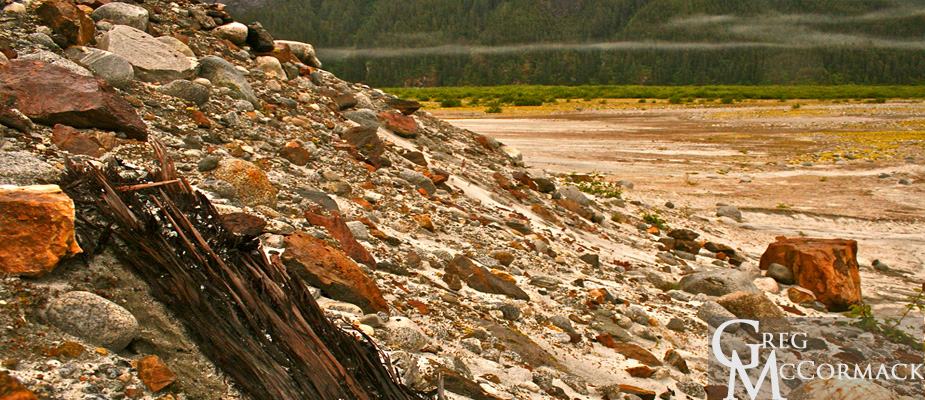
Our trek across the glacier is a favorite activity for our guests. There is the boot-sucking mud that grabs at our boots during our walk. Also, many features of the glacial surface and moraine just in front of the snout keeps you contemplating, for example: What forces are at work to produce such bizarre sand-covered pyramids? They stand several feet high and are covered with fine sand. Most seem to be along a transverse and sutured closed crevasse.
We head back elated from our days adventure for our small boat trip back to the mother ship.
Wednesday | June 1st
July 28, 2011 by admin
Filed under InnerSea Discoveries
Leah our wellness instructor offers a morning meditation on the shoreline next to a river swollen from snow melt.
A full days worth of activities ensues in Patterson Bay. The bay was named after Carlisle Patterson, Superintendent of the Coast Survey on a ship in the late 1870’s.
I have the all-day bring-a-sack-lunch kayak and a half-dozen of us luxuriate amongst the stunning scenery while feeling the warm rays of delicious sunshine. I write in my journal: “One of the loveliest paddle days of my life…waterfalls everywhere you look, cascading down thousands of feet of sheer cliffs. The roots of trees and shrubs grips the cliffs with tenacity. The breath-taking views has everybody practically speech-less. You can almost see and feel the vegetation growing as the sunshine is so intense.”
“We are so appreciative for what Mother Nature is providing: stunning scenery and sunshine in Alaskas’ vast and very fecund wilderness. A variety of neotropical migrant songbirds are heard throughout our kayak including: Orange-crowned warbler, Townsends’ Warbler and Wilson’s Warbler and the first of the season Swainsons’ Thrush, fresh from a flight from South America.”
“The daintiest most delightful waterfalls have carved out notches following cracks and weaknesses in the very resistant bedrock. The bay is even more beautiful due to the flood tide and the water is oh-so-clear with 1000’s of barnacle exo-skeletons floating in the waters surrounding our plastic ‘yaks. I tell my pod of kayakers that barnacles shed–like a snake its skin—in order to become larger crustaceans, a process called ecdysis.”
“I don’t think I’ve seen more waterfalls on a kayak trip. Water seems to be dancing, leaping and falling with comet-tail ends over cliffs and in a frenzy down to the sea-surface practically every 50 meters or so. The pleasing sounds of the waterfalls reminds me of a few words from naturalist John Muir who said that ‘the snow is melting into music.”
Besides my kayak tour, snorkelers had fun frolicking along the shoreline as Dan Blanchard and my colleague Randall created a rooster-tail of water while racing out in our monohull boat with camping equipment for our guests that signed up for the overnight sleep-out.
They are guaranteed a 1000-star or more hotel tonight!


